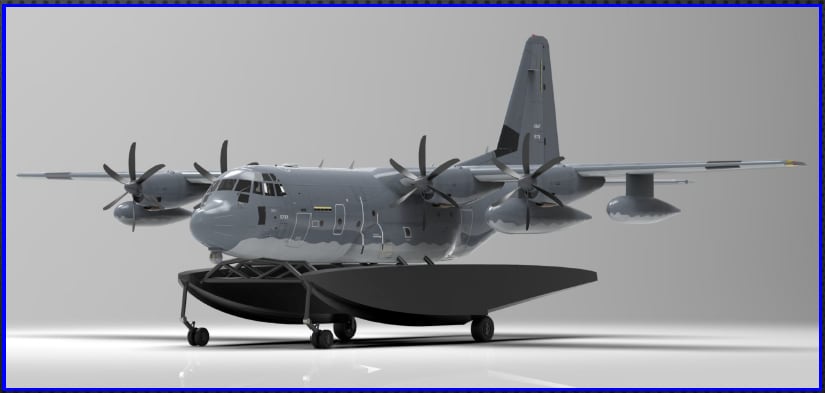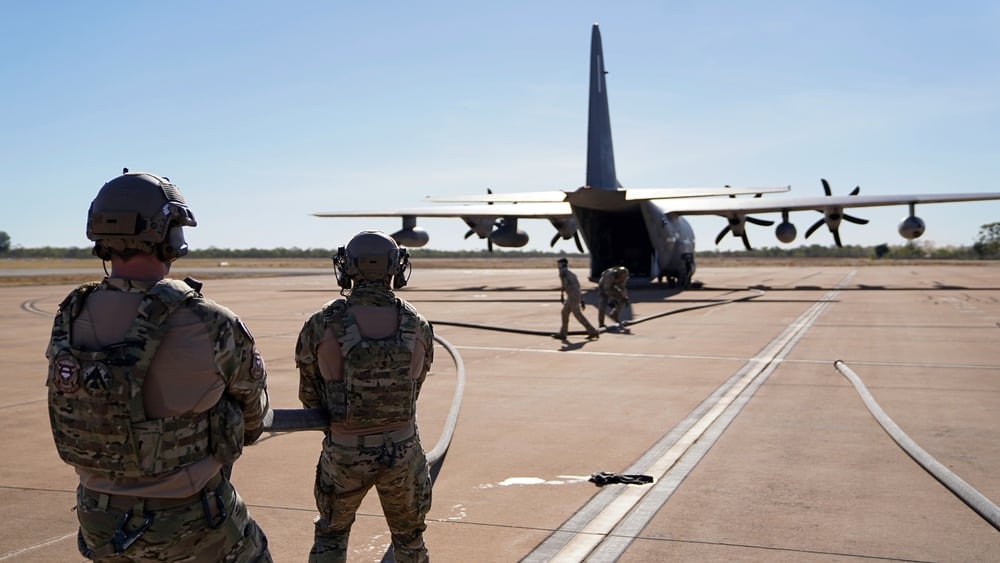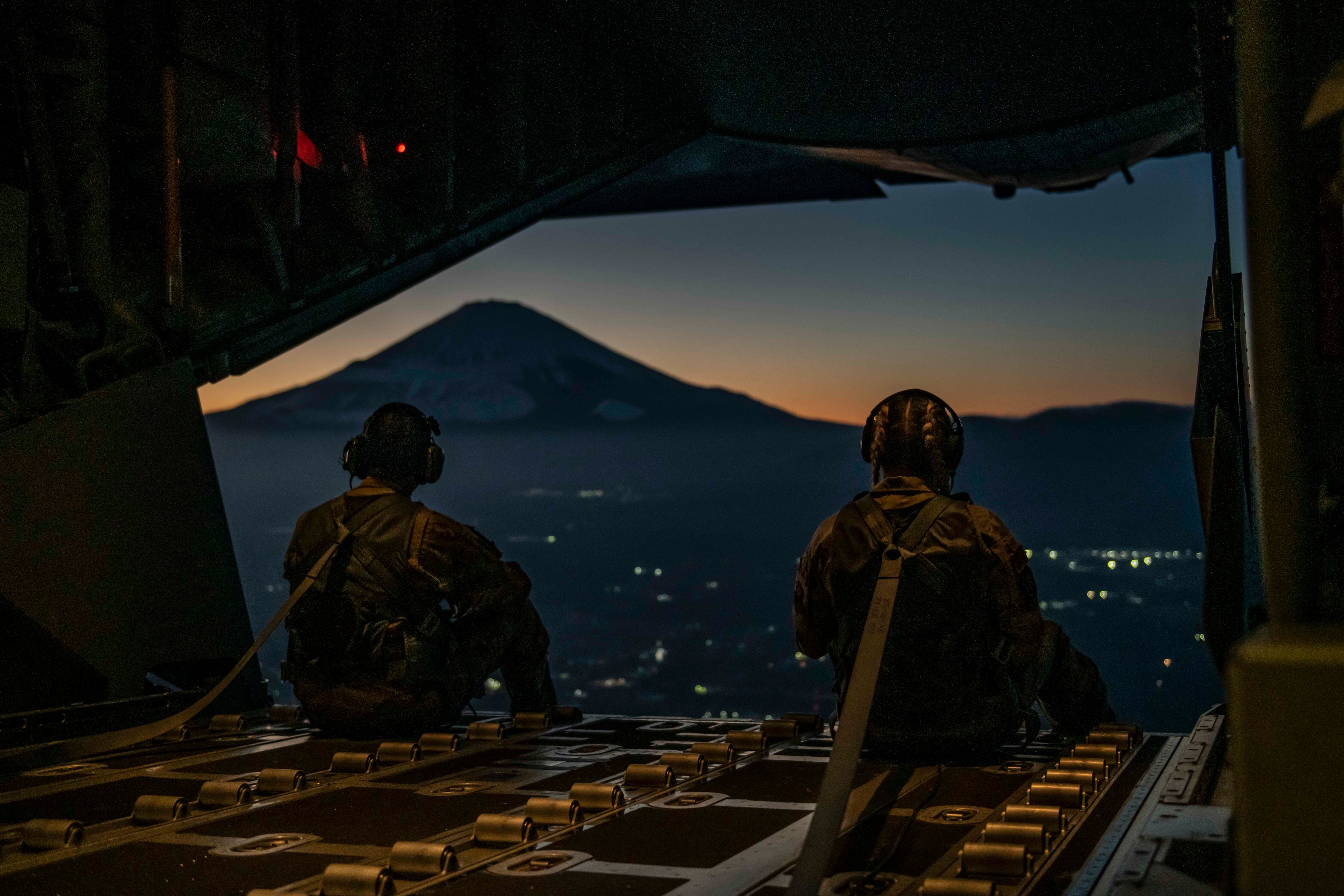TAMPA, Fla. — The most advanced versions of the military’s long-running tanker-turned-death-dealer are expected to get even more toys under the direction of the special operations community.
The MC-130J Commando II and the KC130J Super Hercules aircraft are experimenting with high-energy lasers, amphibious landing and takeoff, and potentially a crewless, fully automated cockpit, if U.S. Special Operations Command’s work is successful.
Program officers laid out the details of the C-130 family of aircraft on Wednesday at the Special Operations Forces Industry Conference, hosted in Tampla, Florida, by the National Defense Industrial Association.
The aircraft, first built in the 1950s, has served generations of troops in combat across the globe. But it’s now facing contested airspace as it has never seen.
“Threats are growing, it’s just getting worse,” said Rich Rodriguez, SOCOM technical director for its Program Executive Office Fixed Wing.
Air Force Col. Ken Kuebler, head of the fixed-wing portfolio, told conference attendees that he’s prioritizing autonomous technology to ease the burden of the flight crew. That was a running theme in nearly all of the air-, maritime- and data-focused panels this week.
Beyond the workload, the crew itself could see eventual trimming. “I need to be able to reduce the crew and able to reduce the crew workload,” Kuebler said. “We’ve got a lot of data coming at us all the time.”
A less busy crew, he said, could then focus more on aircraft safety and combat missions.

Rodriguez said SOCOM has already seen experiments by Air Force Special Operations Command on an unmanned cockpit integrated with a smaller aircraft platform. He did not specify which platform.
If successful, those initiatives could reach a massive plane like the C-130 variants, he said.
Kuebler also wants to save space but add options. “I’ve got to be able to have a platform that’s truly a multimodal, modular system,” he said. That means payloads that can go on and off the aircraft easily and do more than one thing.
Air Force Lt. Col. Kevin McClure, mobility division chief for PEO Fixed Wing, said the C-130 variants are receiving upgrades with a host of new gear. The goal is for the numerous variants to have common systems and to provide safer infiltration, exfiltration, resupply and refuel.
“But the big piece is in contested environments,” McClure said. “And that becomes a really hard problem we need [industry’s] help with.”

They want better communication systems able to take in data from other platforms to increase situational awareness in real time. “Not only can we react and recover, but we can also share that back out into the community,” McClure said.
That’s true for training, too. Program managers want augmented reality and virtual reality for immersive training on the C-130 variants and as many other aircraft as possible.
What’s going on with the MC-130J?
In terms of recapitalization, the U.S. is modifying the MC-130J with mission systems for special operations forces to improve low-level infiltration/exfiltration, airdrop, resupply and refueling in contested environments.
Ongoing efforts include radar integration, airborne mission networking, radio frequency countermeasures, open mission systems integration, special mission processor tech refresh, tactical flight management system and cloud-based mission system integration.
Planned efforts include automated mission systems functionality for joint all-domain operations, palletized munitions, active electronically scanned array radar, and augmented reality and virtual reality training.
The C-130 started its life as a tanker/transport plane. It continues to be a truck in the sky, but one that can collect data, sense targets and strike when needed.
Lt. Col. Matt Foertsch, strike division chief for PEO Fixed Wing, said current work includes integrating the MC-130Js with a precision strike package and sensor systems for “next-generation” targeting. His work also includes retiring the “W” variant that preceded the “J” variant, which should conclude by July, he said.
The latest work on the AC-130 gunship
Ongoing efforts include sunsetting the AC-130W fleet, finishing AC-130J Block 30 production, retrofitting Block 20+ AC-130Js to Block 30, providing infrared suppression systems and bringing in defensive system upgrades.
Planned efforts include crew reduction initiatives, taking on a modular, open-systems approach, and adopting augmented reality and virtual reality training.
In other words, the gunship must maintain its close-in strike capability but also take on an integrated deterrence push, which the Pentagon assigned to the command.
To make that work, Foertsch said, personnel are eyeing air-delivered munitions primarily for the “best lethality.” An example of this approach, he explained, is an integrated weapons data link added to a 50-pound warhead class last year.
Foertsch called the data link an “incredible capability” that allows the crew to fire and then communicate with the round in flight, issuing instructions.
The link gives the user a “dud” command option, which can render the weapon inert midflight if a strike needs canceled.
But that still needs improving, he said. To do, that they’re looking to industry to provide guidance and next-generation sensors that can work in GPS-denied environments.
“We largely do laser targeting now,” he explained, and even that’s not enough. They are also looking for optical or automated target recognition in modular, open systems.
But they want to do that by dropping in capabilities to their existing forms, rather than adding another, purpose-built round. And they want greater range and standoff.
Work on that front is being done with two small business research grants, he said. Those involve testing a miniature cruise missile with electrical propulsion that fires past 100 nautical miles, and another small cruise missile that can go twice that distance.
As if that isn’t enough, they’d also like to get this 82-ton plane to land on water and take off again.
That’s important for Navy SEALs, Marine Raiders and other operators who need to get wet in far-flung locations.
Rodriguez said Air Force special ops personnel are doing digital planning and working to place floatation assemblies on the platform for just that task.
Correction: This article has been updated to reflect the correct timeline of C-130 development.
Todd South has written about crime, courts, government and the military for multiple publications since 2004 and was named a 2014 Pulitzer finalist for a co-written project on witness intimidation. Todd is a Marine veteran of the Iraq War.





